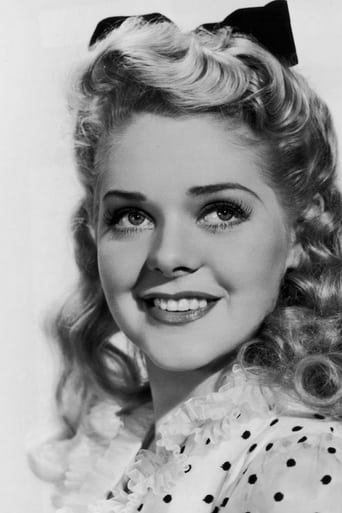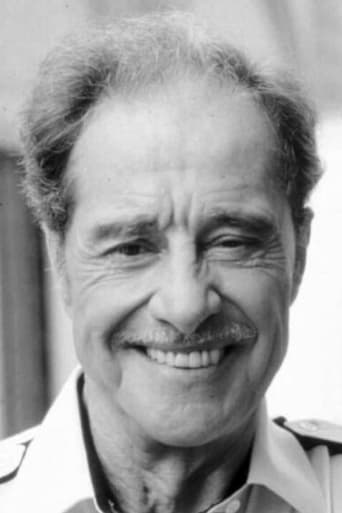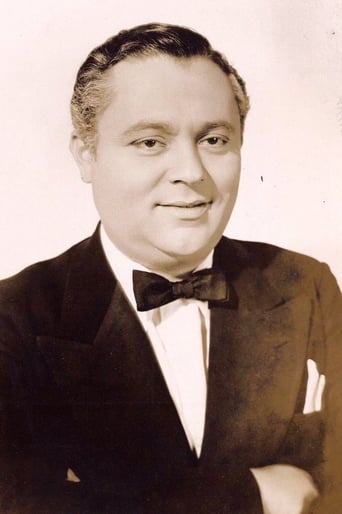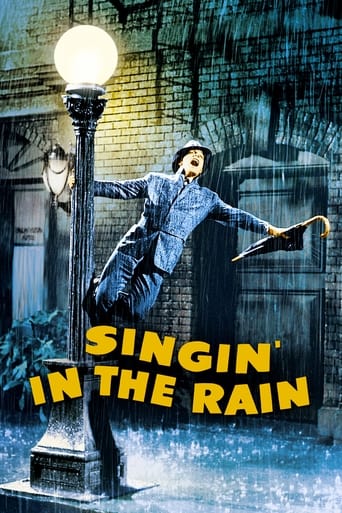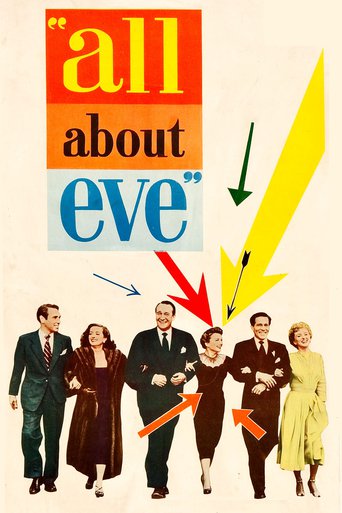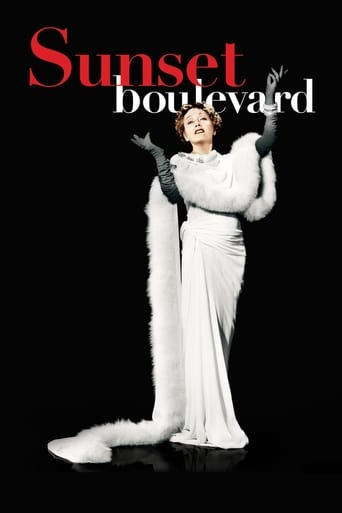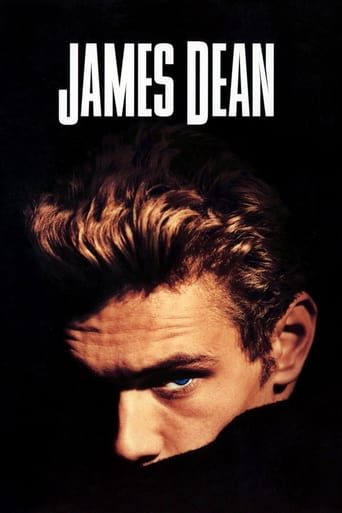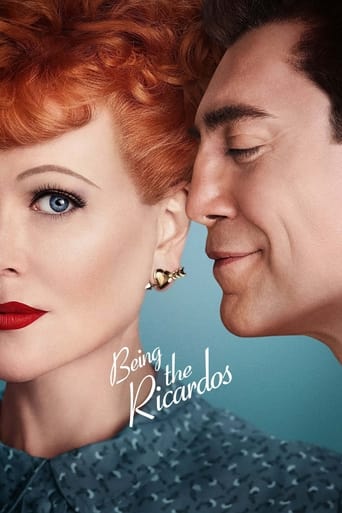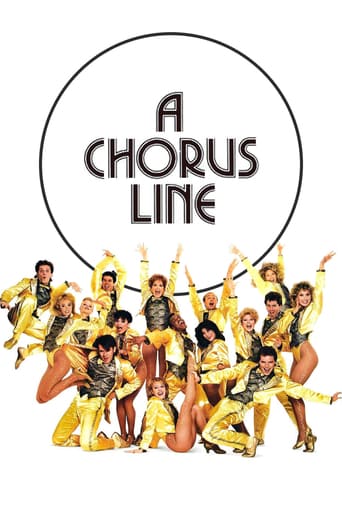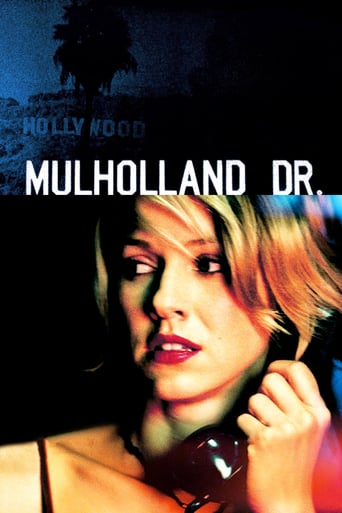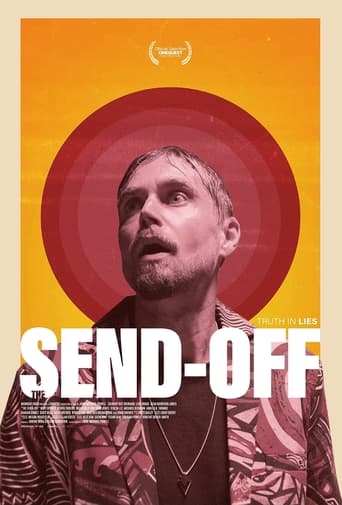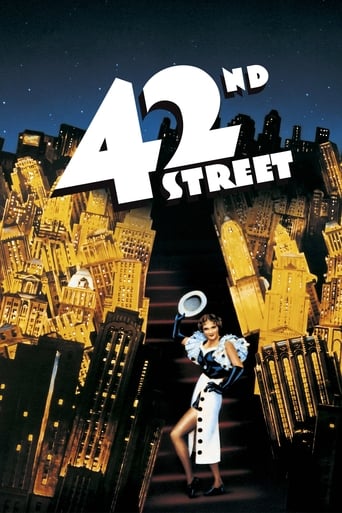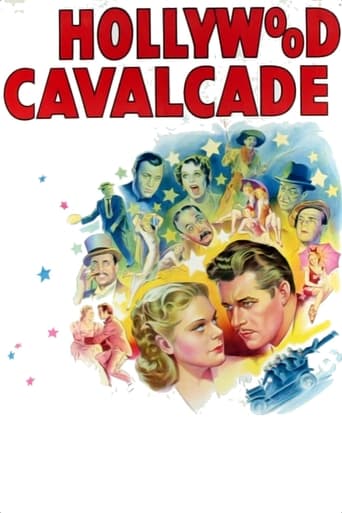
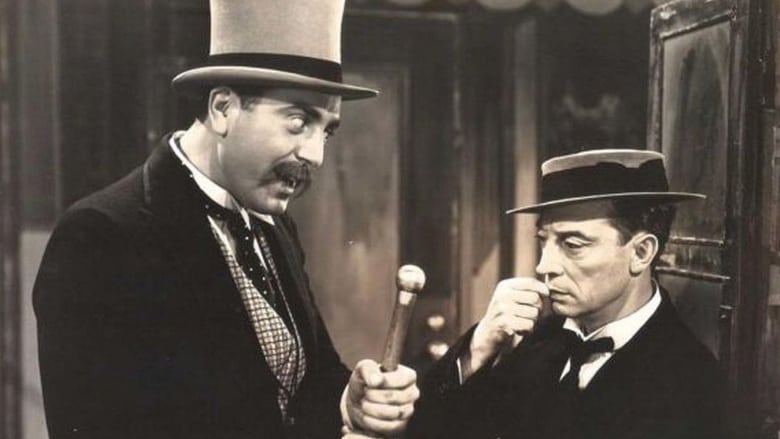
Hollywood Cavalcade (1939)
Starting in 1913 movie director Connors discovers singer Molly Adair. As she becomes a star she marries an actor, so Connors fires them. She asks for him as director of her next film. Many silent stars shown making the transition to sound.
Watch Trailer
Cast


Similar titles
Reviews
In the same year's "Rose of Washington Square", the two stars of this movie played fictional versions of Fanny Brice and Billy Rose, with Tyrone Power as a re-named Nicky Arnstein. In "Hollywood Cavalcade", they are playing amalgamations of a variety of early movie making legends, most obviously Mack Sennett and Mabel Normand. Like "Rose", this film later was further explored as a Broadway musical-"Rose of Washington Square" was legitimized as "Funny Girl", and part of "Hollywood Cavalcade" became "Mack and Mabel".In "Hollywood Cavalcade", Don Ameche plays a variety of Hollywood creators rolled into one; Other than Sennett, bits of Cecil B. DeMille and D.W. Griffith are thrown in as well. Alice Faye could be anybody from Pearl White (the Serial Queen), Gloria Swanson, and Mary Pickford, in addition to Normand. The first half of the film is a tribute to Sennett and Normand with the creation of the first pie fight to the bathing beauties and Keystone Cops. The second half has Ameche's character taking a more serious look at his art, making romantic thrillers much like DeMille and an "Intolerance" like epic. Normand's drug usage is never explored, although Faye's character of Molly Adair goes through many tragedies and Ameche finds himself on the outs as his temperamental ways get the better of him.What doesn't work about this film is the usage of two different moods. The first is light-hearted; the second is much darker. Many of the great silent era comics (including Buster Keaton playing a fictionalized version of himself) appear or are mentioned (one heavyset character, only seen from the back, is referred to as "Roscoe", the real name of disgraced comic legend Fatty Arbuckle). The romance between Faye and Ameche is never really explored, although it is obvious that they both love each other in completely different ways. They are only reunited professionally because of Molly's admiration for her Svengali. This is an enjoyable film, with Ameche and Faye both photographing beautifully, but the convoluted screenplay is against them.
The plot: Michael Linnett Connors has done everything in films but direct, and is looking for his 1st big chance. He discovers Molly in a play and at once knows she will be a big film star. He signs her to a contract with the stipulation that he must direct. The producer agrees and their big time careers are under way. What follows is a recreation of the silent film era and early sound movies with great emphasis on comedy. And, oh yes, there's romance, and a little sadness too. The performances by Don Ameche and Alice Fay are top notch. The music is a real plus too with some old familiar tunes heard. Lots of DVD extras as well in this restored version released in 2008. It must be emphasized that this movie is a story 1st, not just a tribute to silent films. Later years would bring similar films such as, Singin' in the Rain(1952) & Dick Van Dyke-Carl Reiner's, The Comic(1969). What is special about this film, though, is recreating silent movies in 1939. We see portions of them as the cinema audience would in that bygone era(although some sound effects are included)in glorious b&w, while the rest of the movie is in pristine color. One of the greatest in the silent era, Buster Keaton, who at this point was on an uphill climb, is used superbly in 2 silent film recreated scenes and he is on the top of his game! It is said that he had some input on his scenes as well. But the real reason to watch the movie, if your a motion picture history fan, is that beyond everything else, Hollywood Cavalcade is Mack Sennett's film legacy. It doesn't take a genius to realize this movie is a "positive" reworking of Mack Sennett's and Mabel Normand's life. The character Michael "Linnett" Connors is Mack Sennett, whose real name was Michael Sinnott. And Molly, of course is Mabel. Sennett had the pie throwings, the bathing beauties and Keystone Cops. He worked with Buster Keaton, Ben Turpin(cameo), Roscoe "Fatty" Arbuckle(body double) and fell in love with his leading lady. Not only all that, but Sennett was technical adviser for this film and appears in it as well. As most film viewers today prefer sound features, those who were associated with short subjects and silents are left out to pasture. As Mack Sennett fell into that category, it is fortunate that there is Hollywood Cavalcade! Sennett was of course very instrumental in the evolution of comedy in movies. His career started in 1908 as an actor, then writer, director & producer. He semi retired in 1935 with about 500 films to his credit. He had worked with the best, such as Charlie Chaplin, Gloria Swanson, Bing Crosby, W.C. Fields, Keaton, Harry Langdon, Arbuckle, and even Roy Rogers(in Way Up Thar).As film comedy is an extremely difficult path to continue for an entire career, Mack played it wise & did only selective work for the next 25 years. In 1931 he had received an academy award in the short subject category, and another in 1937 for a lifetime of work. In the 1940's his presence was still felt, e.g. Here Come the Co-Eds(1945)where a recreation of the oyster soup scene used in Mack's Wandering Willies(1926)is done. In 1947, The Road to Hollywood, used some of Sennett's Crosby films. 2 years later brought some nostalgia with the film Down Memory Lane in which he participated. With his knack of always associating with the right people, a guest role with the eternally popular Lawrence Welk & his radio show came about later in the year. 1950 brought a re-release of his greatest triumph, Tillie's Punctured Romance(1914) with sound. In 1952 he was honored on TV's, This Is Your Life, then his autobiography, The King of Comedy(1954), which is a great companion piece to Hollywood Cavalcade, was published. 1955 brought a more concrete association with Abbott & Costello, as he had a cameo in A&C Meet the Keystone Kops. Finally in 1957, another tribute with the compilation film, The Golden Age of Comedy. So when you watch Hollywood Cavalcade it is the legacy of a motion picture pioneer. In the film at the banquet scene the camera pans over the guests at a long table. As we get to the silver haired Mack, he alone turns his head to the camera as if to say, "here I am!". When he rises to give a speech a short while later, he is at his most subdued, underplaying the words given him as if to mentally convey, "I know my influence on comedy will never end, but will people forget Mack Sennett the individual. Maybe this movie will help."
"Hollywood Cavalcade" (1939), directed by Irving Cummings, became 20th Century-Fox's answer to David O. Selznick's ever popular and often imitated Hollywood story, "A Star is Born" (1937) featuring Janet Gaynor and Fredric March. As with "A Star is Born," "Hollywood Cavalcade" begins with opening titles in type written form on a movie script, and, with the exception of theatrical screenings of silent comedies and re-enactment of "The Jazz Singer," the entire production is in Technicolor. Unlike "A Star is Born," however, the photo-play goes back further in time, in fact, during the silent years of motion pictures instead of a ten year cycle concluding to the present day. While one might expect Gaynor to appear in this "Star is Born" imitation set during the cycle where her career actually began, the surprise turns out to be Alice Faye, better known for musicals, whose screen career started in 1934, assuming the role as a silent movie queen. Don Ameche, on the other hand, minus his famous mustache in the early portion of the story, is appropriately cast as Faye's guide and director.As for the fictional account to an existing era, the plot begins in 1913 where Michael Linnett Connors (Don Ameche) and his partner, Dave Spingold (J. Edward Bromberg) come to New York City where they attend a stage production of "The Man Who Came Back" featuring Molly Adair (Alice Faye), an understudy filling in for Trixie Farrell, whose come up with laryngitis. Although Molly's performance comes across as bad, it does attract some attention by Connors, who offers her a studio contract in "pictures" for $100 a week. At first she declines, but after much persuasion, she takes him up on his offer and heads for Hollywood. Molly's screen test for Globe Pictures makes an impression, especially in a slapstick comedy starring Buster Keaton where she accidentally gets a pie in her face that has audiences roaring in laughter. Pie throwing comedies become a sensation, but eventually fade for more sophisticated productions. As years pass, Mike attempts new ideas, making Molly as top star in dramatic roles. While Molly has fallen in love with Michael, his mind is mostly on his work, creativity and his own movie studio bearing his name. He realizes his error too late when Molly marries Nicky Hayden (Alan Curtis), her leading man (who was discovered working in a gas station). Having lost Molly, whose career is at its peak, Michael falls to hard times, with no movie offers due to his big budget costs and bad temperament towards his actors and crew. With the 1927 premiere of "The Jazz Singer" that becomes the talk of Hollywood, putting an end to the silent era, closing a chapter to old careers and opening the door for the new, the studio is faced with the dilemma as to what to do with Molly's unfinished silent production of "Common Clay" with Michael now back in the director's chair.A great idea to an old story, "Hollywood Cavalcade" is a fun film to sit through, full of nostalgia and re-enactment of how silent movies, especially comedies, were made. Guest appearances by silent comics now past their prime including Buster Keaton, Ben Turpin and Chester Conklin are a plus; Eddie Collins, Hank Mann, Heinie Conklin, Snub Pollard and James Finlayson adding to the enjoyment as The Keystone Kops; with added bonuses of comedy director Mack Sennett delivering a testimonial at the Cocoanut Grove; Lee Duncan, the man who discovered Rin-Tin-Tin, the first dog superstar, as played by Rinty Jr.; as well as the legendary Al Jolson appearing briefly in the Sabbath prayer sequence of "Kol Nidre" from "The Jazz Singer" during the latter part of the story. Up to then, the fun has dimmed due to melodramatics and tragic circumstances that take up the second half with harsh realities taking place during the close of an age of silent movie making.In the supporting cast, look for the familiar faces of Stuart Erwin as Pete Tinney, the cameraman; Donald Meek as Lyle P. Stout; Jed Prouty, Chick Chandler, Irving Bacon, Willie Fung, and much more.Because Alice Faye was a specialized singer, it's a wonder why the screenwriters didn't think of having her perform in an early sound musical? A missed opportunity put to better advantage years with MGM's "Singin' in the Rain" (1952) starring Gene Kelly and Debbie Reynolds. As for "Hollywood Cavalcade," it's sadly forgotten due to lack of revivals, even with Technicolor, though it would have been more authentic with black and white photography. Out of circulation for many years, it did have some repeated showings on American Movie Classicscable channel in 2001, followed by the Fox Movie Channel where it can currently be seen and studied by film enthusiasts. Thanks to its authentic recreation of a bygone era and a grand first hour or so, "Hollywood Cavalcade" is recommended viewing. (***)
It's 1913. A studio prop boy spies the actress who is going to become Hollywood's next great movie star and he's the director that's going to make it happen. After inventing pie throwing and the keystone cops, his dream comes true. Being completely absorbed in his film-making, however, he fails to notice that he is losing his leading lady to another man. Several over-budget flops later, he is known as nothing more than the director who turned down Rin-tin-tin. Fortunately for him, the loyal and compassionate residents of Hollywood are untainted by ambition and ego. He'll be okay as long as he still has his friends.This movie starts out as a mad-cap comedy typical of the time period, and in the opening scenes it holds its own with the best of them. It has a playful lack of self-consciousness which is sorely missing in most of today's comedies. Shortly into the film, however, it moves away from this mode of comedy and instead attempts to entertain us using the films within the film. These are silent slapstick comedies, well done but nothing out of the ordinary, and they go on for much longer than is necessary for any audience which has seen the originals. Upon returning, the film takes a dramatic turn. It's well written and the cast does an excellent job of making the transition, but the movie really should have decided from the beginning what it was going to be.By the end of the film, it has transformed once again - this time into a paean to the glitter of Hollywood. The small town of Los Angeles has grown up into the city which makes the movies that entertain the whole world.In spite of its promising beginnings, this film has not aged particularly well. Nevertheless, it does have some strong scenes, a certain nostalgic appeal, and an entertaining sub-text about the people who made it and the audiences it was made for.


